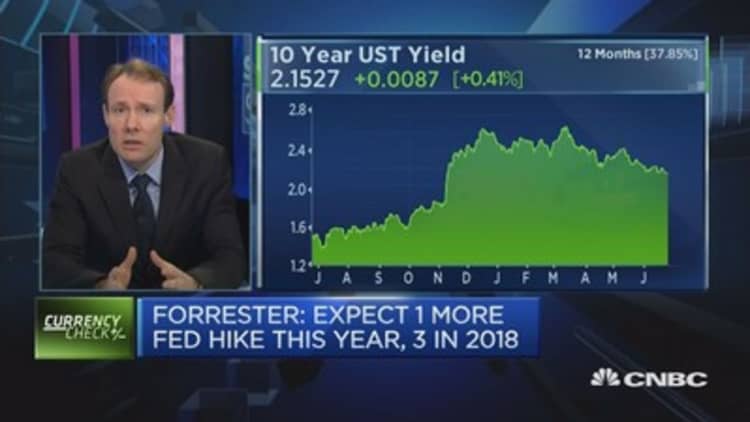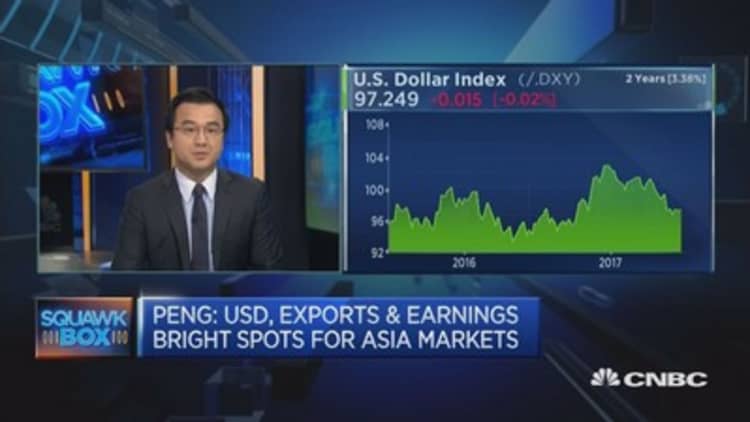
While investors seem to have come to a consensus view that the U.S. dollar rally is coming to an end, Credit Agricole has offered a contrarian take: There is room for the greenback to strengthen.
David Forrester, the bank's FX strategist told CNBC Monday that markets have been predominantly focused on U.S. inflation data and pricing in an overly cautious Federal Reserve. But, he thinks the Fed will be more hawkish than what is currently expected, which will support the U.S. dollar.
"The Fed seems to have changed its policy response function. Yes it's going to pay attention to the data, but less so. It now wants to get its rates normalized so that it actually has room to cut rates in the next downturn," Forrester said.
"Let's not forget here: The U.S. expansion, while being soft, is actually pretty mature so the Fed is getting lined up here in preparation for the next downturn. That's why we think they're going to hike rates and we will see a steepening of the U.S. Treasury curve and that will be supportive of the U.S. going forward."
Credit Agricole expects the Fed to hike rates once more this year, followed by three times in 2018. U.S. inflation — still below its 2 percent target despite a low unemployment rate — has been a key point in the argument on whether the Fed should continue normalizing rates.
Forrester said the divergence between the unemployment rate and inflation is not unique to the U.S. Globally, economies face structural issues such as ageing populations and automation replacing jobs, which could increase the risks of a recession.
But, he said U.S. inflation should pick up on the back of further wage growth and a rebound in oil prices.
"We expect the U.S. economy to continue to recover and strengthen, we will believe in the Philips curve in the U.S. We do expect wages growth to accelerate and inflation expectation(s) to pick back up. So all-in-all, we do expect that re-steepening," he said. The Philips curve relates to a supposed inverse relationship between the level of unemployment and the inflation rate.

Forrester's views are in contrast to that of many analysts, who expect weakness in the U.S. dollar. Ken Peng, Asia investment strategist at Citi Private Bank, told CNBC's "Squawk Box" that the greenback is headed for a "new cycle" after a six-year rally since 2011.
He added that the dollar weakness will be "one of the greatest market trends" for global investors.
"I think the U.S. probably still has a good shot at passing some kind of tax reforms, tax cuts, fiscal stimulus but it's just going to be a lot smaller. What that means is that the U.S. economic performance, interest rates, inflation are probably not going to run that far ahead of the rest of the world and that's probably going to bring us a weaker U.S. dollar," Peng said on Monday.
"Going forward, we're looking at a new cycle for the U.S. dollar. This is not going to be small nor brief, I actually think after a six-year rally we're probably in for a few years of weakness in U.S. dollar. That typically contains 15 to 20 percent of potential weakness there in the U.S. dollar broadly over a number of years."


